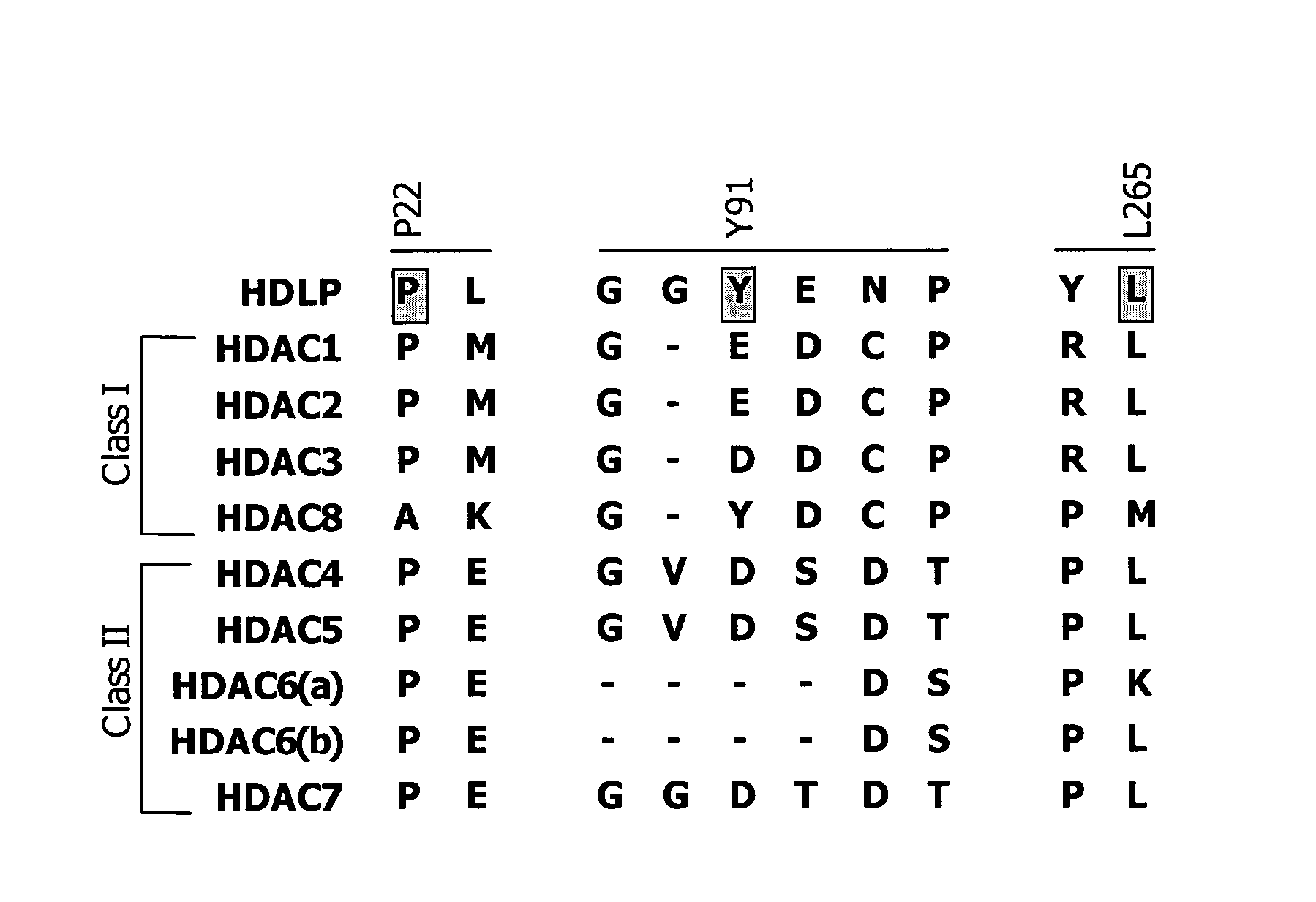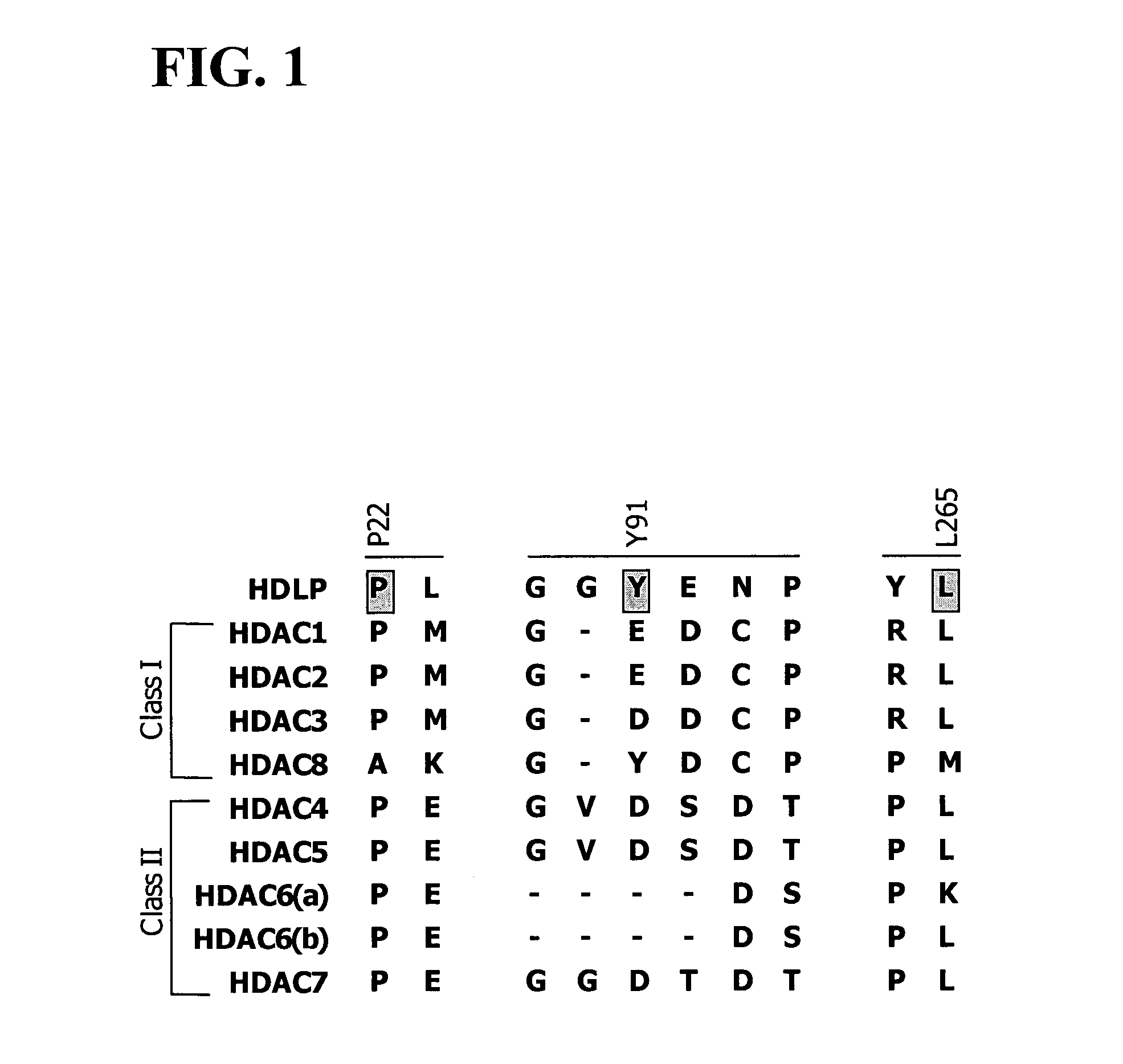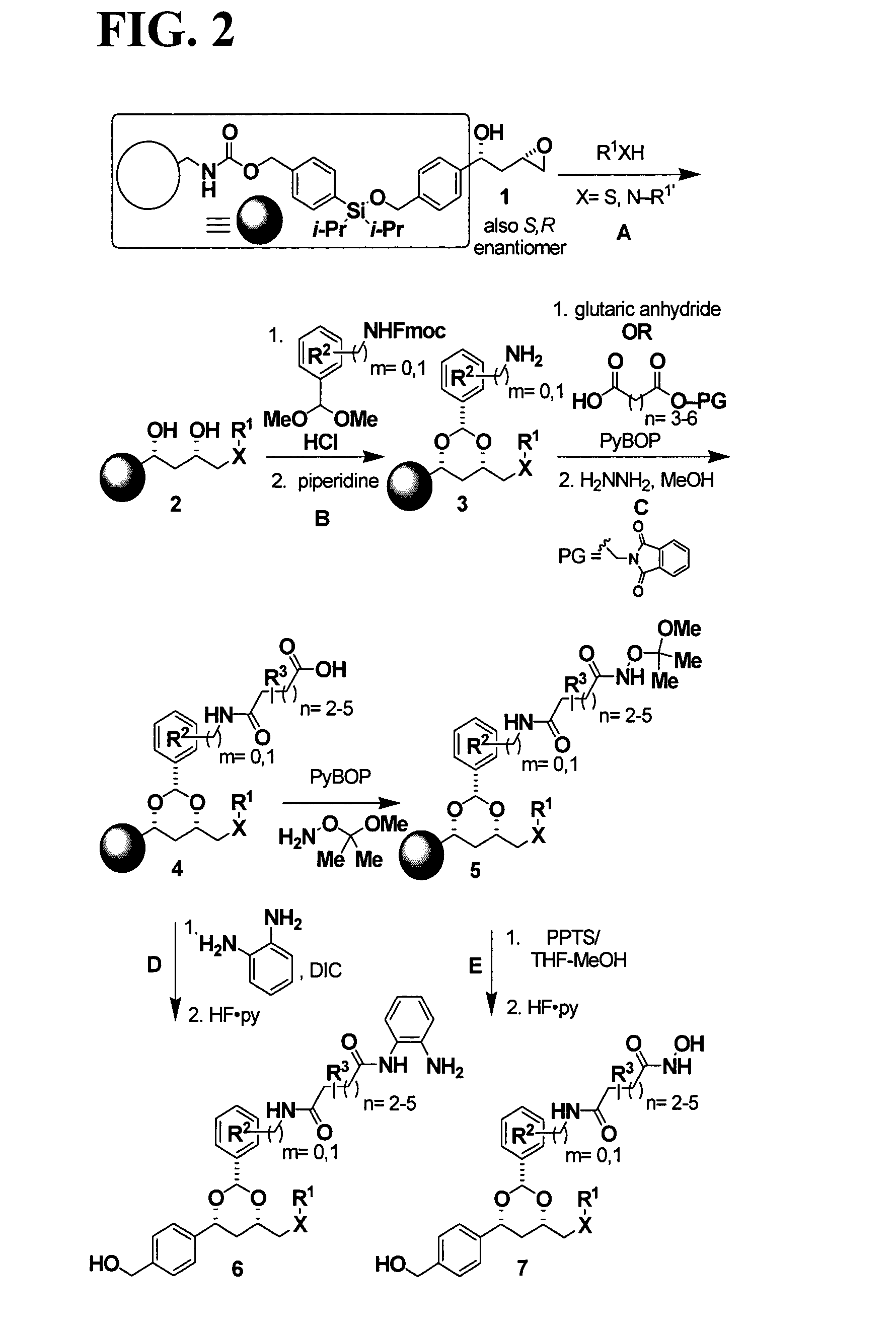Dioxanes and uses thereof
a technology of dioxanes and dioxanes, applied in the field of dioxanes, can solve the problems of difficult to predict which small molecules to be produced, difficult to obtain and synthesize efficiently small molecules, etc., and achieve the effect of high density and diversity of functionality and high density of functionality
- Summary
- Abstract
- Description
- Claims
- Application Information
AI Technical Summary
Benefits of technology
Problems solved by technology
Method used
Image
Examples
example 1
I. EXAMPLE 1
Synthesis of 1,3-dioxanes for Use as HDAC Inhibitors
[0585]Post-translational modification of proteins through acetylation and deacetylation of lysine residues has a critical role in regulating their cellular functions (Kouzarides, T. EMBO J 2000, 19, 1176). While small molecule probes for specific protein kinases and phosphatases exist, probes of histone acetyl transferases and deacetylases are limited due to their lack of selectivity. Described below is the synthesis of a library of 1,3-dioxanes and the discovery of certain selective small molecule inhibitors of histone deacetylases (HDACs). Thousands of such compounds using the one bead-one stock solution format ((a) Stemson et al. J. Am. Chem. Soc. 2001, 123, 1740–1747; (b) Blackwell et al. Chem. Biol. 2001, 8, 1167–1182 (c) Clemons et al. Chem. Biol. 2001, 8, 1183–1195) for synthesis have been described below.
[0586]HDACs are zinc hydrolases that modulate gene expression through deacetylation of the N-acetyl-lysine re...
example 2
III. EXAMPLE 2
Synthesis of 1,3-dioxanes and use in Multiple Phenotypic and Protein-binding Assays
[0684]As described above, the compounds of the invention are useful as inhibitors of HDAC. In addition, small molecules, such as the compounds of the invention, provide a means to modulate rapidly and therefore dissect the circuitry of biological networks (Mitchison et al. Chem. Biol. 1994, 1, 3–6; Schreiber et al. Bioorg. Med. Chem. 1998, 6, 1127–1152). Such compounds can be discovered using phenotypic (Mayer et al. Science 1999, 286, 971–974) or protein-binding assays (MacBeath et al. J. Am. Chem. Soc. 1999, 121, 7967–7968). Phenotypic assays can be used to identify small molecules that modulate a specific cellular or organismic pathway without prior knowledge of the protein components of the pathway. Protein-binding assays, often used in drug discovery efforts, can also be used to identify reagents for exploring protein function in subsequent biological assays. By determining the path...
example 3
V. EXAMPLE 3
Use of 1,3-dioxanes as Modulators of a Glucose-sensitive Subset of Genes Downstream of Ure2p
[0727]The progress in identifying and expressing all human proteins (Wiemann et al. Genome Res. 2001, 11, 422–435) presents an opportunity to develop a small-molecule modulator for every protein function. Small molecule approaches to study protein function have illuminated diverse fields of biology. Examples include tetrodotoxin, which enabled the dissection of the action potential (Narahashi et al. J. Gen. Physiol. 1964, 47, 965–974), and agonists of peroxisome-proliferator-activated receptorγ such as rosiglitazone, which illuminated the regulation of adipogenesis (Lehmann et al. J. Biol. Chem. 1995, 12953–12956). However, in most cases no small molecule that can modulate the function of a protein of interest is known, and there is currently no efficient method of identifying these biological probes. Using the example of the yeast protein Ure2p, general two-step method has been d...
PUM
| Property | Measurement | Unit |
|---|---|---|
| dissociation constant | aaaaa | aaaaa |
| flow rate | aaaaa | aaaaa |
| pH | aaaaa | aaaaa |
Abstract
Description
Claims
Application Information
 Login to View More
Login to View More - R&D
- Intellectual Property
- Life Sciences
- Materials
- Tech Scout
- Unparalleled Data Quality
- Higher Quality Content
- 60% Fewer Hallucinations
Browse by: Latest US Patents, China's latest patents, Technical Efficacy Thesaurus, Application Domain, Technology Topic, Popular Technical Reports.
© 2025 PatSnap. All rights reserved.Legal|Privacy policy|Modern Slavery Act Transparency Statement|Sitemap|About US| Contact US: help@patsnap.com



